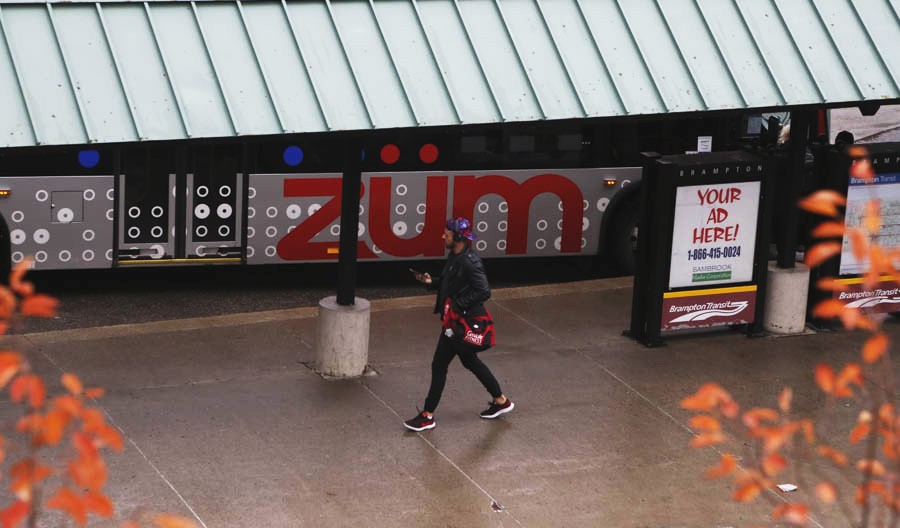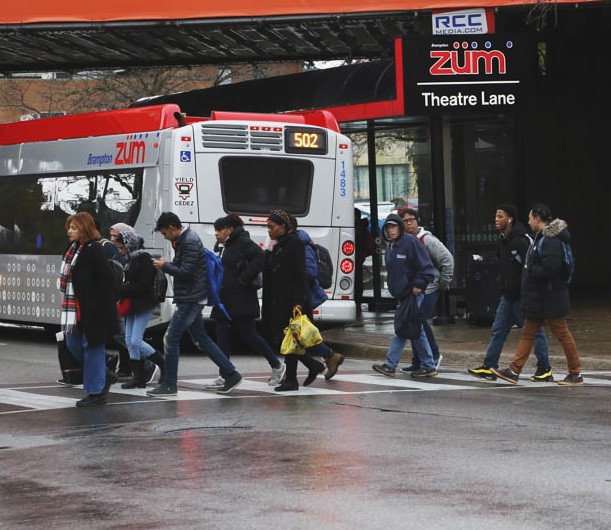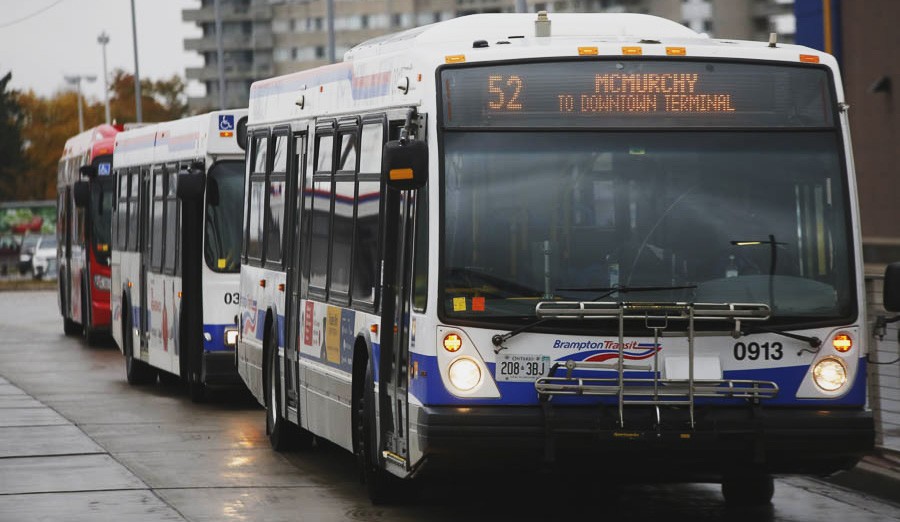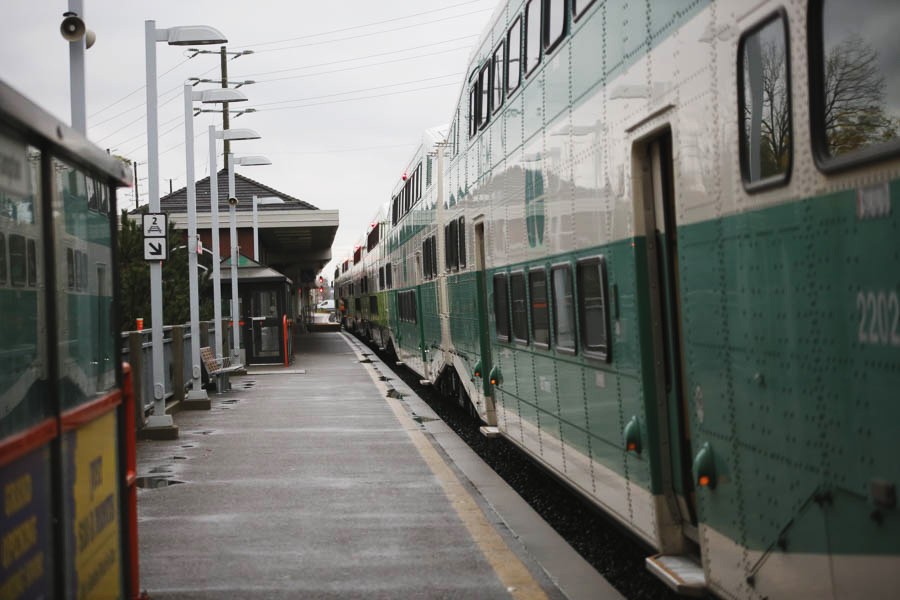
Peel residents on board with province taking the wheel on transit
A highly ambitious vision for the future of GTA public transit appears to have the stamp of approval from local residents.
A survey of 1,000 people released today by the Toronto Region Board of Trade indicates that 87 percent of Peel respondents expressed support for what the board has dubbed “Superlinx” — a conglomeration of 11 municipal transit authorities around the Greater Toronto, Hamilton and Waterloo regions into one entity.
The idea was first outlined in a report from the TRBOT released 11 months ago, titled Superlinx: An Uploading Strategy for a Modern Provincial Transit Agency. At the time, many critics saw the idea of a single unified transit authority as a pipe dream. But the board viewed putting one agency in charge of all of the region’s transit as the best way to get projects financed more quickly, on the way to creating an efficient and seamless transit system across the region.

It appears the majority of the region’s residents agree. Across the GTA, 79 percent of respondents supported the concept, with the strongest levels of support in York Region (89 percent) and Halton Region (88 percent), followed by 78 percent in Durham, 67 percent in Waterloo and 65 percent in Hamilton. Some 74 percent of Toronto respondents also favoured the idea.
Brian Kelcey, TRBOT’s vice president of public affairs, said that while many people acknowledged the idea made sense when it was first outlined almost a year ago, the board was “pleasantly surprised” by the strong support expressed across the GTA.
“Our hope is that results like these and the debate that is happening now about a regional transit model gets us to a point where Peel transit riders and York Region transit riders and city of Toronto riders are all seeing benefits from an improved system.”
The board outlined in the initial report that a regional transit authority like Superlinx would improve movement across a region that is “falling behind on the service quality of our global competitors and not addressing the needs of a growing population.”
What’s to blame? Poor funding for municipalities, a patchwork transit system that doesn’t focus on the real trans-border needs of commuters, and endless politically-motivated debates that have often stopped potential projects in their tracks. The last is a factor Brampton residents are all too familiar with, after council turned down a provincially funded $1.6-billion LRT route that would have brought light rail transit right into the city’s downtown core.
It’s perhaps that gritty reminder that has residents feeling open to alternatives. In 2017, Brampton received $11 million in gas-tax revenues from the province to be devoted to transit, up from $10 million the year before. It’s a paltry amount considering that the city is growing at a pace more than three times the national average. Pressure on Brampton’s transit system is increasing, with ridership on buses rising steadily year over year since the system hit the 23-million-ride mark in 2015.

The survey, which was conducted in August via an online panel, with targeted regional samples weighted for age and gender, reveals a mixed bag of support for the transit systems in Peel. On the one hand, 71 percent of respondents expressed satisfaction with their local transit system, and only 26 percent believed their commute had worsened over the past year. However, 76 percent of respondents agreed that the regional transit system is in need of a “significant overhaul.”
Still, some local transit advocates are skeptical about the wisdom of giving the province oversight on all major transit decisions. Chris Drew, one of the co-founders of Fight Gridlock in Brampton, notes that consolidating GTA transit agencies into one entity would involve coordinating a lot of moving parts. It could lead to Brampton’s needs being ranked lower than those of other municipalities.
“If we just call Brampton Transit something else but the funding doesn't increase and our existing plans aren't implemented faster, what's the point? In addition, if Brampton Transit is absorbed into a new agency, it would be most unfortunate if the first acts of that new agency were to fund even more subway stops in Scarborough when a better LRT proposal is available,” he told The Pointer. “That subway-LRT difference in funding could be far better used in Brampton.”
Kelcey explained that, in the board’s vision, the Superlinx idea doesn’t mean eliminating municipal systems, or “blowing that up and starting from scratch.” Under Superlinx as proposed, municipalities would mostly be left to manage their transit while following criteria laid out by the provincial entity to qualify for project funding. It’s what Kelcey describes as a “contract model.”
“I think city governments and regional governments have done a really good job in their difficult circumstances,” he said. “With a contract model, the province could avoid having to amalgamate and micromanage all these existing and well-performing [local providers].”
Currently, the typical funding formula requires municipalities to cover one-third of the capital cost of large transit projects — something that cities, constrained by their reliance on property taxes to pay for everything they do, are increasingly unable to swallow. The status quo is nearing a “breaking point,” Kelcey said.
Under the Superlinx model, the province would be responsible for covering the cost, but the impact on the bottom line would be much less significant than the impact on municipal budgets.
“Our hope is that results like these and the debate that is happening now about a regional transit model gets us to a point where Peel transit riders and York Region transit riders and city of Toronto riders are all seeing benefits from an improved system.”
Brian Kelcey - VP Public Affairs Toronto Region Board of Trade
“It’s about getting everyone on the same funding platform,” Kelcey said, and helping cities like Brampton and Mississauga build new projects needed to support their growth. “We’re going to need new professional capacity, financing capacity and new revenues. That doesn’t exist in those jurisdictions.”
“The relative hit on the province is going to be a lot lower,” Kelcey said.
This stance represents a reversal from what the board had long advocated, when it called on the province to move more growth revenue down to the municipalities to fund these projects.
“It hasn’t worked,” said Jan De Silva, TRBOT’s president and CEO. “It’s time to try to upload transit responsibility to the province instead, since that’s where growth revenues, planning authority and financing capacity already exist.”
Having a provincial entity overseeing project development and planning would allow the region to move away from a patchwork system that leaves riders disconnected and frustrated.
The new Superlinx would keep local priorities at the forefront, Kelcey explained, but also maintain a regional perspective where it makes sense to do so for better development of a seamless system across the region.
“It means you have the province requiring that municipalities, with their local bus systems, cross borders sometimes if it makes sense,” he said. “You’re doing it in a way that protects local input but solves the long-term financing problem.”
Right now, the province is indicating it may be shifting slowly in this direction. Premier Doug Ford has expressed a desire to consult on a developing a regional transit system broader than Metrolinx and has already suggested uploading responsibility for TTC subways to the province.

Whatever the future brings, Drew said certain questions should be prioritized before organizational changes are discussed.
“Brampton has clear transit needs, which we've advocated for. We want specific responses to those needs from council, Queen's Park and Ottawa before we get behind any governance discussion,” he said. “The people sitting on packed Brampton Transit buses, stuck behind cars because there aren't dedicated lanes, don't want elected representatives to waste a lot of time on a governance concept. They want rapid transit now.”
The numbers agree. A poll commissioned by The Pointer during the election campaign found that approximately a quarter of the 999 respondents wanted easing traffic congestion to be the number one focus for the incoming council. The same poll found that 61 percent of respondents supported an LRT for Brampton, though they were divided on which route it should take.
Submit a correction about this story


